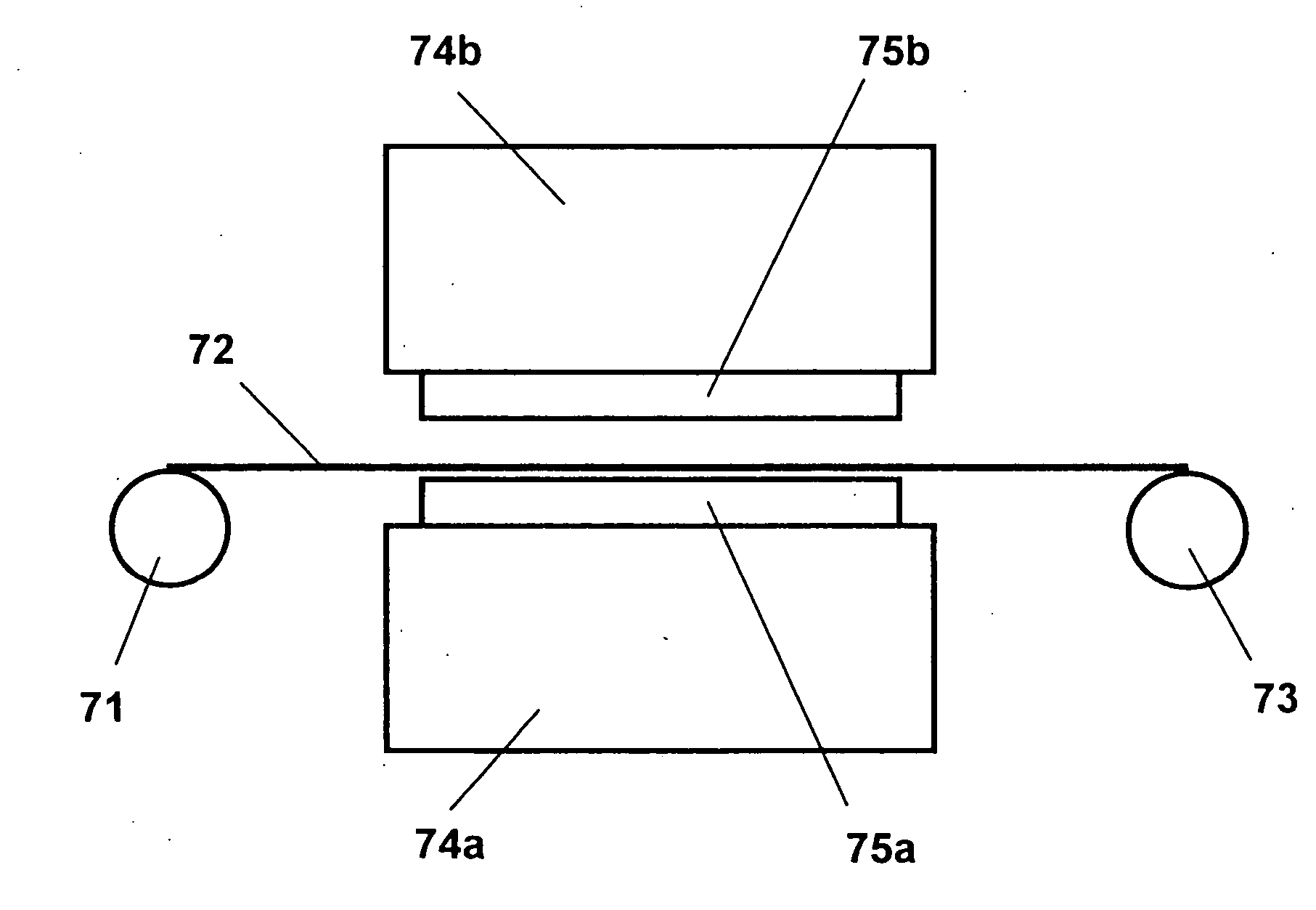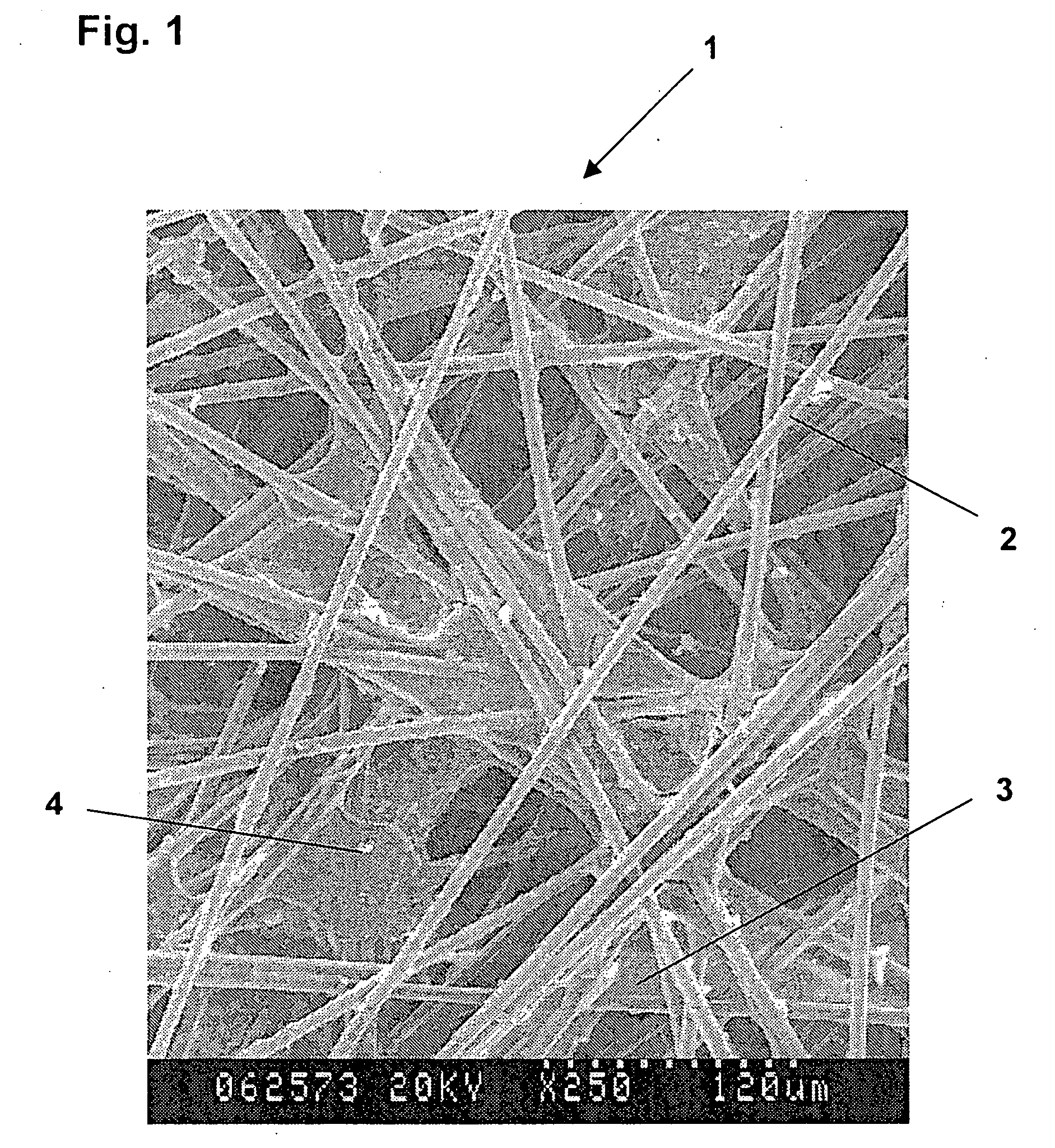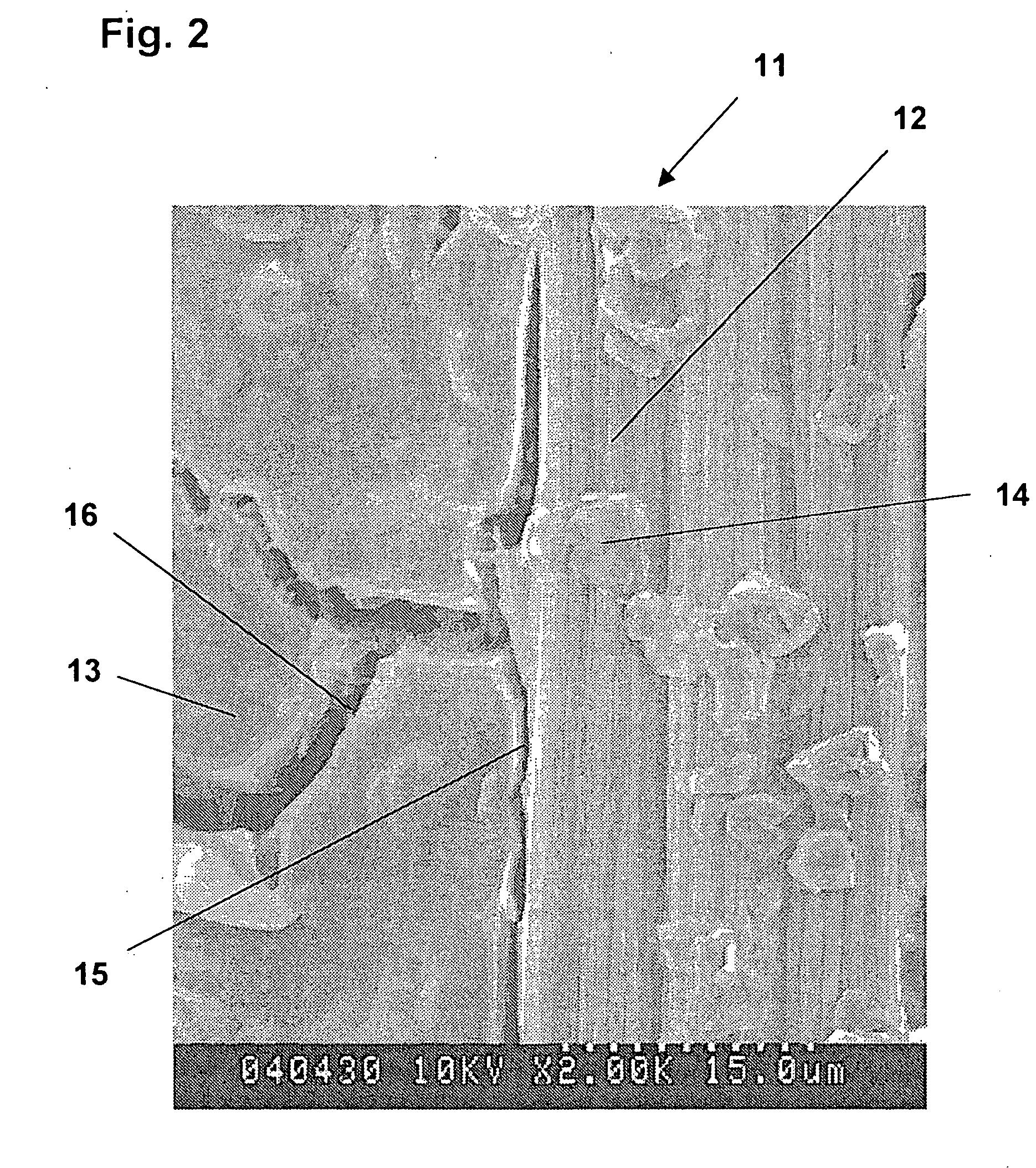Porous carbon base material, method for preparation thereof, gas-diffusing material film-electrode jointed article, and fuel cell
a technology of porous carbon and base material, applied in the field of porous carbon substrate, can solve the problems of inconvenient handling, difficult to provide porous carbon substrate in long continuous forms, inconvenient handling, etc., and achieve the effect of low cost and high productivity
- Summary
- Abstract
- Description
- Claims
- Application Information
AI Technical Summary
Benefits of technology
Problems solved by technology
Method used
Image
Examples
example 1
[0174] Carbon fibers (polyacrylonitrile-based carbon fibers “Torayca” T-300-6K produced by Toray Industries, Inc., average single fiber diameter 7 μm, number of single fibers 6,000) were cut at a length of 12 mm, and paper was produced continuously from them using water as a dispersion media. The paper was immersed in 10 wt % polyvinyl alcohol aqueous dispersion, and dried, to produce long short-carbon-fiber paper with a unit short-carbon-fiber weight of about 32 g / m2. It was wound as a roll. The amount of deposited polyvinyl alcohol corresponded to 20 parts by weight in reference to 100 parts by weight of the short-carbon-fiber paper.
[0175] A dispersion obtained by mixing graphite powder (flaky graphite BF-5A produced by K.K. Chuetsu Kokuen Kogyosho, average particle diameter 5 μm), phenol resin and methanol at a ratio by weight of 1:4:16 was prepared. The short-carbon-fiber paper was continuously impregnated with the dispersion to ensure that the amount of the phenol resin became...
example 2
[0196] A porous carbon substrate 1 was produced as described for Example 1, except that the post-curing treatment of the compressed resin-impregnated carbon fiber sheet was not performed.
[0197] The physical values, production conditions and evaluation results of the obtained porous carbon substrate 1 are shown below.
[0198] Volume of the pores with pore sizes of 10 μm and less: 0.07 cc / g
[0199] Thickness: 0.16 mm
[0200] Porosity: 83%
[0201] Average fiber diameter of short carbon fibers: 7 μm
[0202] Maximum bending load: 0.49 N / cm
[0203] Maximum bending load displacement: 1.47 mm
[0204] Bending modulus of elasticity: 9 GPa
[0205] Particle diameter of carbonaceous powder: 5 μm
[0206] Amount of carbonaceous powder: 13 wt %
[0207] Average fiber length of short carbon fibers: 12 mm
[0208] Density: 0.35 g / cm3
[0209] Peak pore size: 39 μm
[0210] Heating rate of carbonization step: 500° C. / min
[0211] Curing degree of the thermosetting resin contained in the fiber sheet precursor: 78%
[0212...
example 3
[0214] A porous carbon substrate 1 was produced as described for Example 1, except that the heating rate in the carbonization step was about 1,600° C. / min (at 1,300° C. / min in a temperature range up to 650° C. and at 1,700° C. / min in a temperature range of higher than 650° C.)
[0215] The physical values, production conditions and evaluation results of the obtained porous carbon substrate 1 are shown below.
[0216] Volume of the pores with pore sizes of 10 μm and less: 0.05 cc / g
[0217] Thickness: 0.14 mm
[0218] Porosity: 80%
[0219] Average fiber diameter of short carbon fibers: 7 μm
[0220] Maximum bending load: 0.67 N / cm
[0221] Maximum bending load displacement: 1.46 mm
[0222] Bending modulus of elasticity: 12 GPa
[0223] Particle diameter of carbonaceous powder: 5 μm
[0224] Amount of carbonaceous powder: 13 wt %
[0225] Average fiber length of short carbon fibers: 12 mm
[0226] Density: 0.41 g / cm3
[0227] Peak pore size: 39 μm
[0228] Heating rate of carbonization step: 1,600° C. / min
[022...
PUM
| Property | Measurement | Unit |
|---|---|---|
| pore sizes | aaaaa | aaaaa |
| thickness | aaaaa | aaaaa |
| porosity | aaaaa | aaaaa |
Abstract
Description
Claims
Application Information
 Login to View More
Login to View More - R&D
- Intellectual Property
- Life Sciences
- Materials
- Tech Scout
- Unparalleled Data Quality
- Higher Quality Content
- 60% Fewer Hallucinations
Browse by: Latest US Patents, China's latest patents, Technical Efficacy Thesaurus, Application Domain, Technology Topic, Popular Technical Reports.
© 2025 PatSnap. All rights reserved.Legal|Privacy policy|Modern Slavery Act Transparency Statement|Sitemap|About US| Contact US: help@patsnap.com



